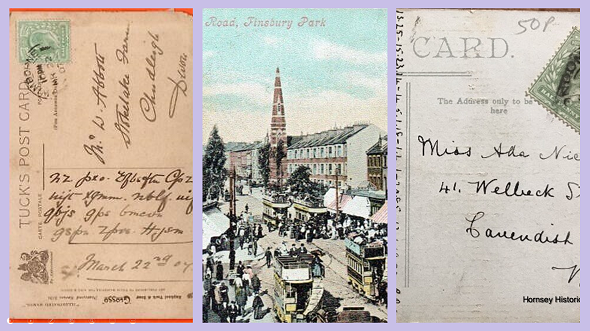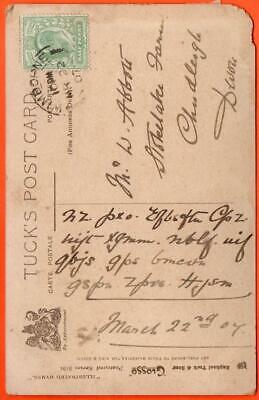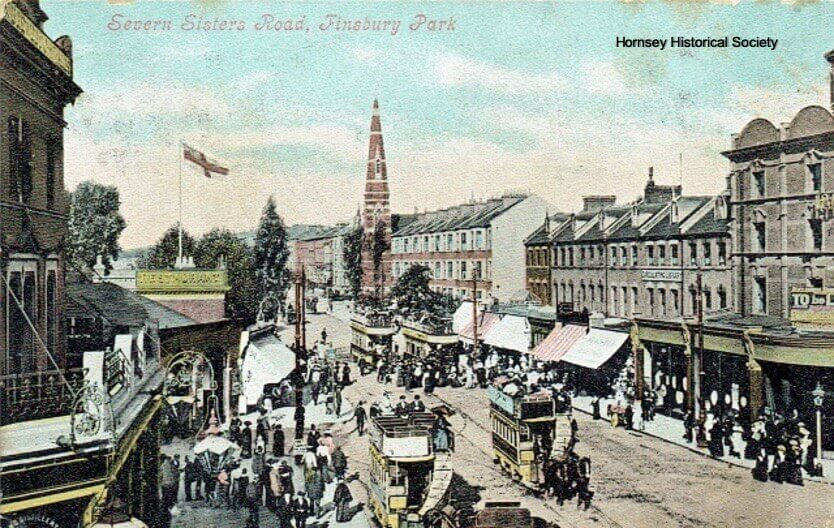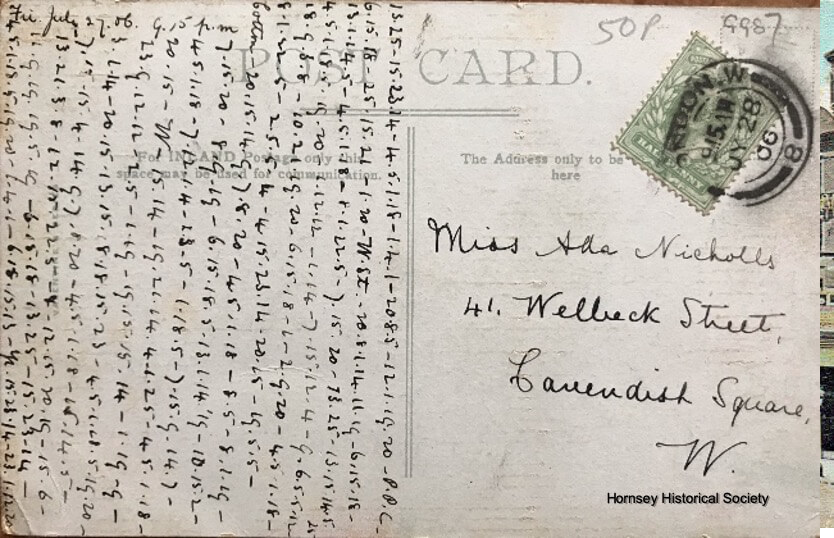Four encrypted postcards from England (part 1)
Several encrypted postcards from different parts of England are waiting to be deciphered. Can my readers help?
English version (translated with DeepL)
Thanks to Google, I have once again come across some encrypted postcards in the vastness of the Internet, the solution of which is unknown to me. Four of the discovered cards come from England. Two of them I want to present today, the rest will come in the next days. I am sure my readers will not let me down this time either. And, of course, these postcards again come with a geography lesson or two.
A postcard from Chudleigh
We begin in Chudleigh, a small town near Exeter in the southwest of England. A person named W. Abbott must have lived there in the early 20th century, and he received a postcard. Unfortunately, I do not know whether the salutation is “Mr.” or “Mi.” or otherwise, so the gender of this person is not clear to me.
The card was sent from Wimborne Minster, 150 kilometers away, if I am interpreting the postmark correctly. It is dated March 22, 1904. The message on the card is encoded:
Unfortunately, the message is not very long. Nevertheless, I assume that it is decipherable. Presumably, the sender used a simple substitution cipher (MASC), which can be solved by guessing words or frequency analysis. Will a reader manage to crack this cryptogram?
A postcard from Hornsey
The next geography lesson takes us to London, or more specifically, to the borough of Hornsey. The local Historical Society has published an encrypted postcard on its website, although the plaintext is not given. On the side of the picture you can see the “Seven Sisters Road” in London:
More interesting for us is the text page:
The card was postmarked “London W” on July 28, 1906. London W” refers to those parts of the British capital whose zip code begins with W. These are located in the west of London. These are located in the west of London. The W in the lowest address line probably has the same meaning.
The recipient was a Miss Alla Nicholls. Presumably, like most coded postcards, this card was sent by a young man to his mistress. Let’s take a closer look at the message:
The Hornsey Historical Society also kindly provides a transcription on their website:
13.25-15.23.14-4.5.1.18 – 1.4.1 – 20.8.5-12.1.19.20-P.P.C-6.15.18-25.15.21-1.20-W.St.-20.8.1.14.11.19-6.15.18-13.9.14.5-4.5.1.18-8.1.22.5-7.15.20-13.25-13.15.14.5.25-4.5.1.18.5.19.20-1.12.12-9.14-7.15.12.4-9-6.5.5.12-18.9.3.8-10.21.19.20-6.15.18-1-2.9.20-4.5.1.18-8.1.22.5-2.5.5.4-4.15.23.14-20.15-19.5.5-Cot-ton-20.15.14.9.7.8.20-4.5.1.18-8.5-8.1.19-7.15.20-8,9.19-6.15.18.5.13.1.14.’19-10.15.2-4.5.1.18-7.12.1.4-23.5.-1.18.5-7.15.9.14.7-20.15-W-15.14-19.21.14.4.1.25-4.5.1.18-23.9.12.12-2.5-1.19-19.15.15.14-1.19-9-3.1.14-20.15.13.15.8.18.15.23-4.5.1.18.5.19.20-7.15.15.4-14.9.7.8.20-4.5.1.18-15.14.5-13.21.38-12.15.22.5-&-12.15.20.19-15.6-11.9.19.19.5.19-6.15.18-13.25-15.23.14-4.5.1.18.5.19.20-1.4.1-6.18.15.13-Yr-15.23.14-23.1.12.20
The third word at the latest – it reads 4.5.1.18 – makes it clear how the card is encoded. This word can only be DEAR, and the substitution table has a very simple structure: A=1, B=2, C=3, and so on. Can a reader manage to solve the whole map?
I assume that the Hornsey Historical Society already knows the plain text. This is indicated by the following words of John Hinshelwood, who wrote the article on the said page:
If you can translate the code you can find out who the author was and what they had to say. You can then judge if it was worth the effort to encrypt the message and speculate on reasons why it was done.
I can only agree with that.
If you want to add a comment, you need to add it to the German version here.
Follow @KlausSchmeh
Further reading: Wer knackt diese Postkarte aus Ohio?
Linkedin: https://www.linkedin.com/groups/13501820
Facebook: https://www.facebook.com/groups/763282653806483/







Letzte Kommentare